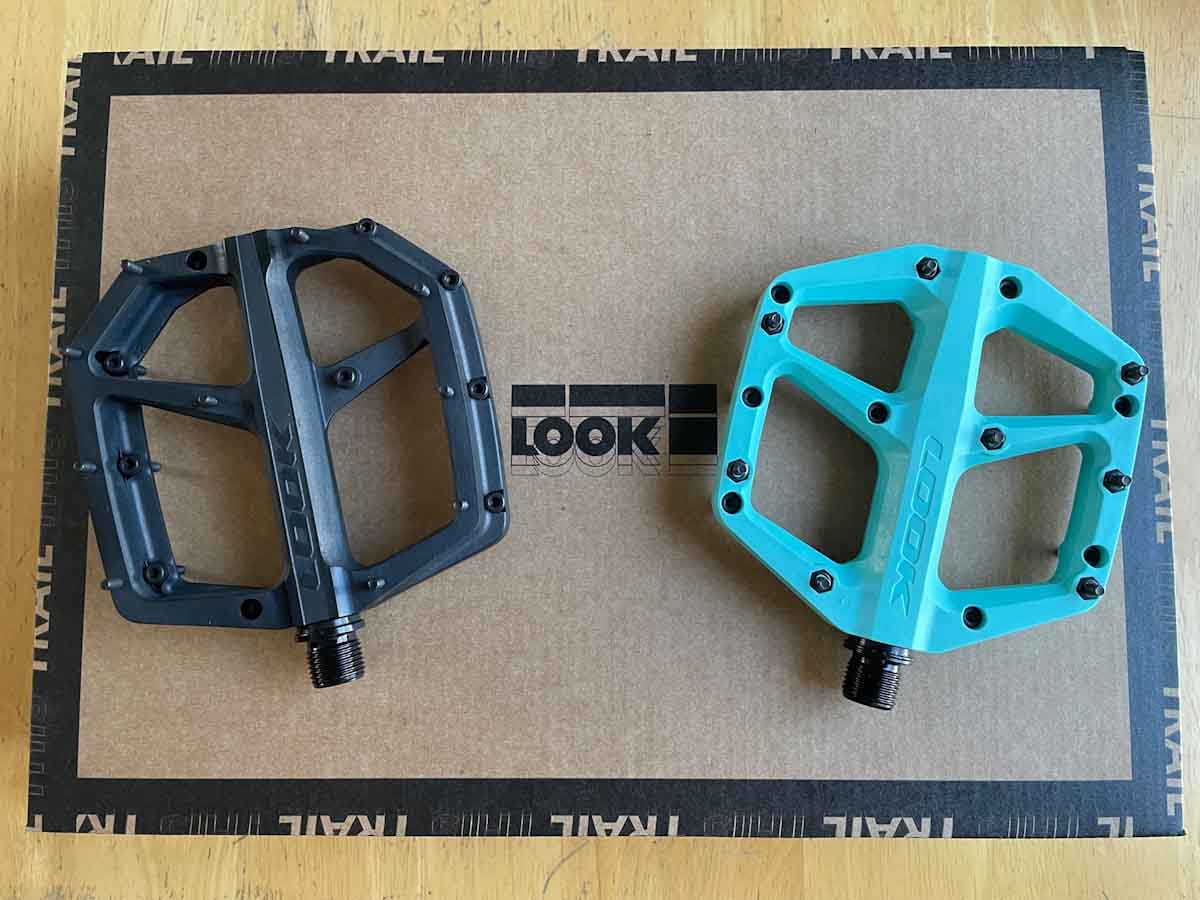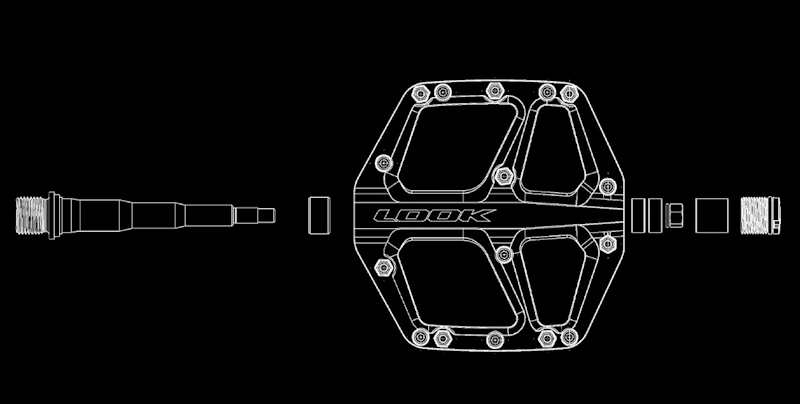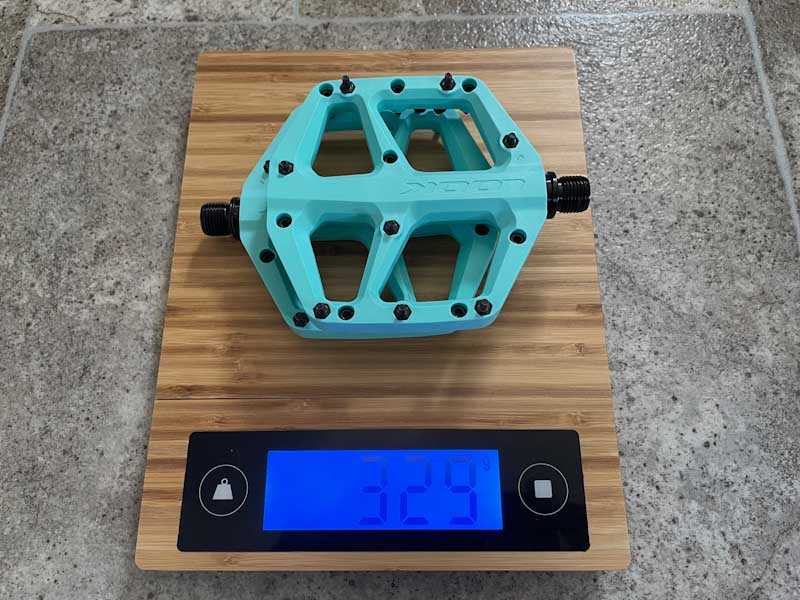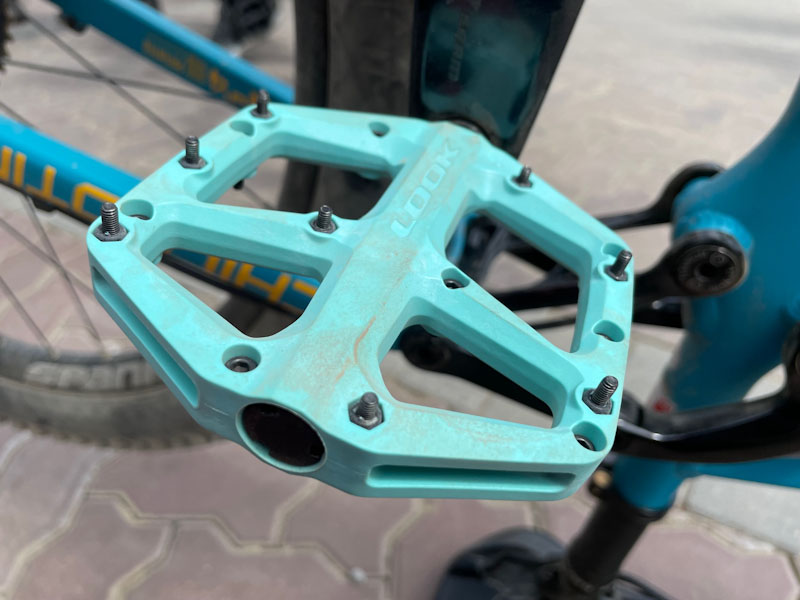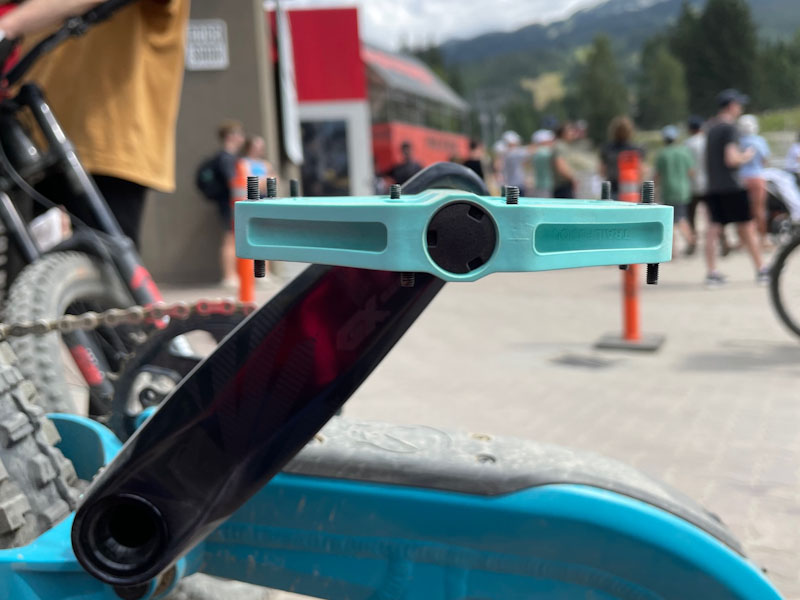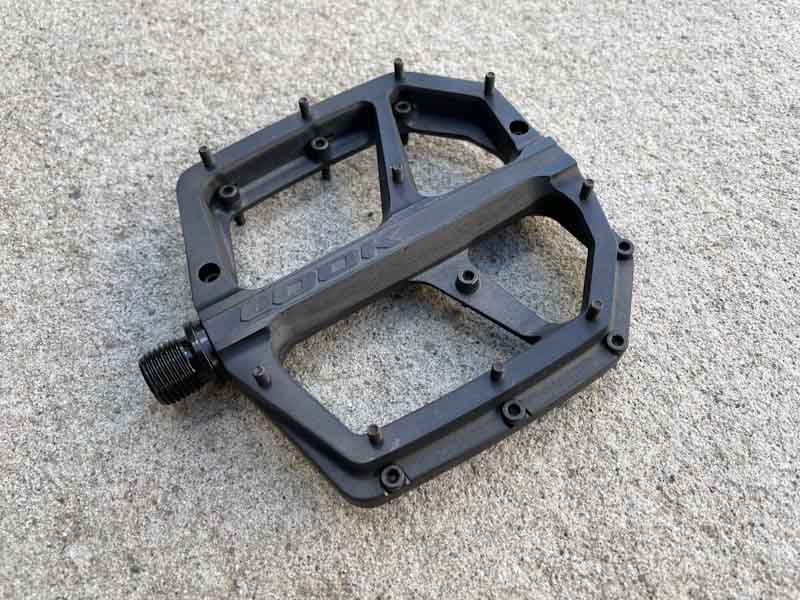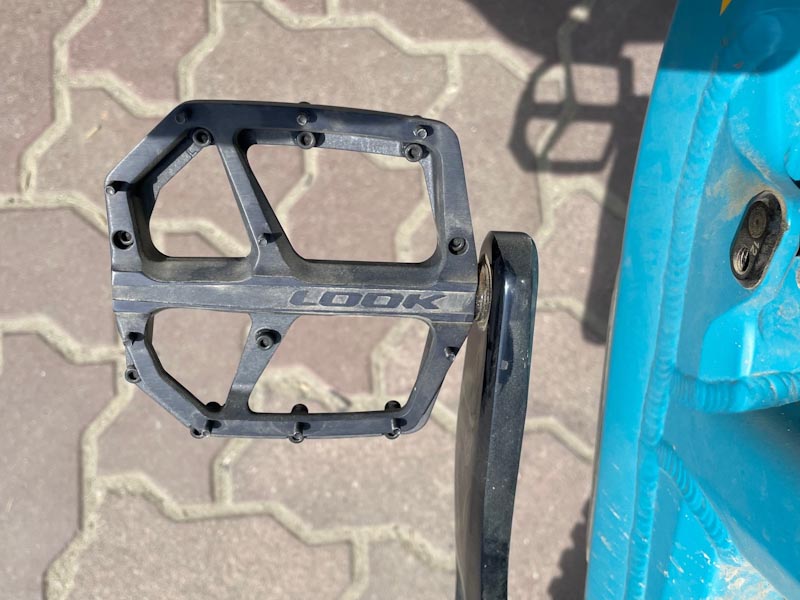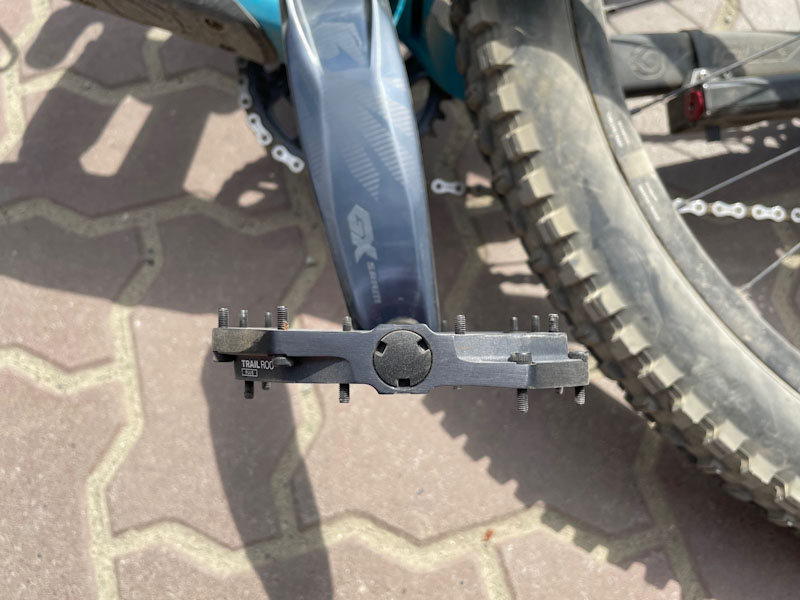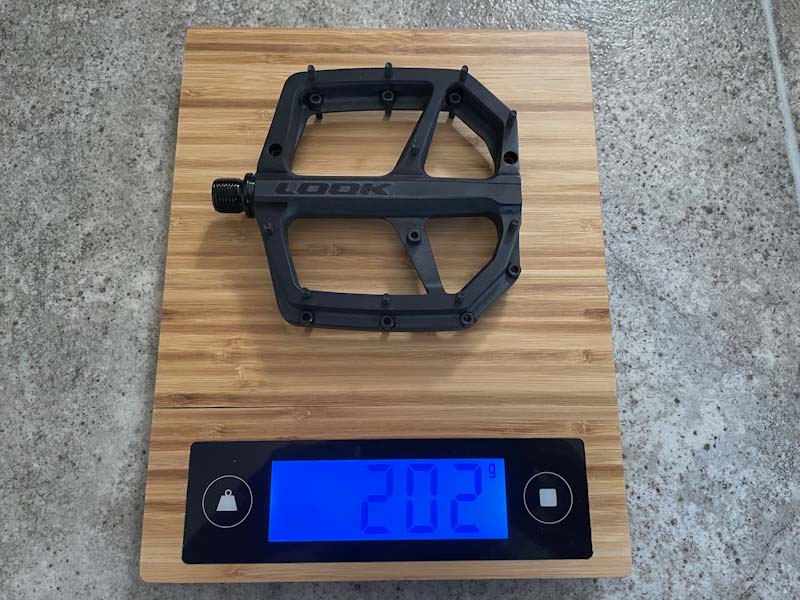LOOK has had a big presence in the cycling world for many years, but they’re best known for their road, track and triathlon pedals rather than their MTB product. This year LOOK decided to jump back into the mountain bike game, and they’re currently assembling a lineup of Trail Roc flat pedals. With expertise in spindles and bearings, it was just a matter of developing new bodies for LOOK to launch their flat pedals with full confidence in their internals.
At Crankworx Whistler LOOK invited the media to check out the development behind their new MTB pedals, get a sneak peek at the incoming Trail Roc + range-topping model, and go for a few laps in the bike park with special guest Thomas Genon! In this article we’ll check out the Trail Fusion composite pedal, preview the Trail Roc + and discuss how both models felt on the trails.
The Trail Fusion pedal features a composite body that measures 107x105mm and is 18mm thick. For traction they offer eight pins per side, and the pin heads are all hidden so they won’t get damaged and become difficult to remove.
Inside the Trail Fusion’s bodies are full-length chromoly spindles, with two sealed bearings on the outside and one plain bearing on the inside, all protected by premium seals to keep dirt and water out.
With their lightweight composite bodies, the Trail Fusion pedals weigh just 329g per pair. They retail for $60, and come in Black, Ice Blue, Lime, Purple or Red. This model was recently released and is available now.
Ride Impressions – Trail Fusion:
Looking at The Trail Fusion pedals, I was concerned they would feel a bit small on the bike. The shape isn’t very square, and I figured the chopped-off corners wouldn’t provide a ton of support for the outer edges of my feet. I am pleased to report they felt fine in this regard; it seems they’re just large enough to keep my size 9.5 feet fully supported on all sides.
Despite the long outer pins, the Trail Fusions don’t lock your feet down. They are fairly grippy, but it’s not hard to adjust a foot while riding.
My only gripe with the Trail Fusion pedal is that I prefer a more concave surface. LOOK has attempted to provide a concave feel by running longer pins on the outsides of the pedal and shorter ones in the middle, but if you look at the pedal from the side you can see the center is thicker than the outer areas. As soon as I set foot on this pedal, it felt a bit convex to me. Once we got riding, the pedal felt pretty much flat but I’d still prefer a more concave shape for my foot to rest in.
Please note what you’re seeing here is a prototype version of the Trail Roc +. These pedals are still in testing, so there is a chance its design gets revised before going to production (I wouldn’t expect major changes, LOOK has already put extensive development into the pedals’ shape).
Throughout its development LOOK has been working with slopestyle rider Thomas Genon to develop a shape and dimensions that work for him. One particular goal they had in mind was to make one pedal that would work for all of Tommy G’s bikes: Genon is a well-rounded rider who rides everything from slopestyle hardtails to DH bikes at Red Bull Rampage. He did mention on our ride how he likes this pedal’s versatility.
The Trail Roc + features a forged aluminum body with 10 traction pins on each side. Like the Fusion model, LOOK stuck with a full length spindle/bearing design for optimal durability, and kept the pin heads protected from potential damage. Since this pedal hasn’t been finalized yet, LOOK asked us to save most of the details for their official launch later this fall. But I can tell you how they felt!
Ride Impressions – Trail Roc +:
As soon as my foot hit the Trail Roc + pedal, I liked it more than the Fusion model for a few reasons. First off, it has a more square shape and despite the Fusions being sufficient in this regard, the Trail Roc + provides more area for solid foot support. This comes in handy when you adjust a foot and it lands not quite perfectly, as there’s enough platform to provide a margin of error. The Trail Roc + isn’t really any larger than the Fusion but its shape definitely provides more support, especially on the outer edge.
The other thing I liked about the Trail Roc + is it offers a noticeably more concave feel than the Fusion model. It’s hard to see in the photo above, but the Trail Roc + does have a very slight concave, and the pedal’s ‘wings’ are just as wide as the center portion around the spindle.
I also noticed the Trail Roc + provides more grip than the Fusion pedal. With three long pins on each end and four more in the middle, this pedal holds your soles tightly. I still didn’t find it difficult to move my foot around, but it takes a bit more wriggling than the Fusion pedals did.
With a quick reminder that this is a prototype, the Trail Roc + hit my scale at 202g, or 404g per pair. Yes, the high-end model is heavier than the composite Fusions but the trade-off is durability (and, in my opinion, a nicer look too).
Stay tuned to Bikerumor for a more thorough review and official launch article for the Trail Roc +, once it is finalized and released this fall.
